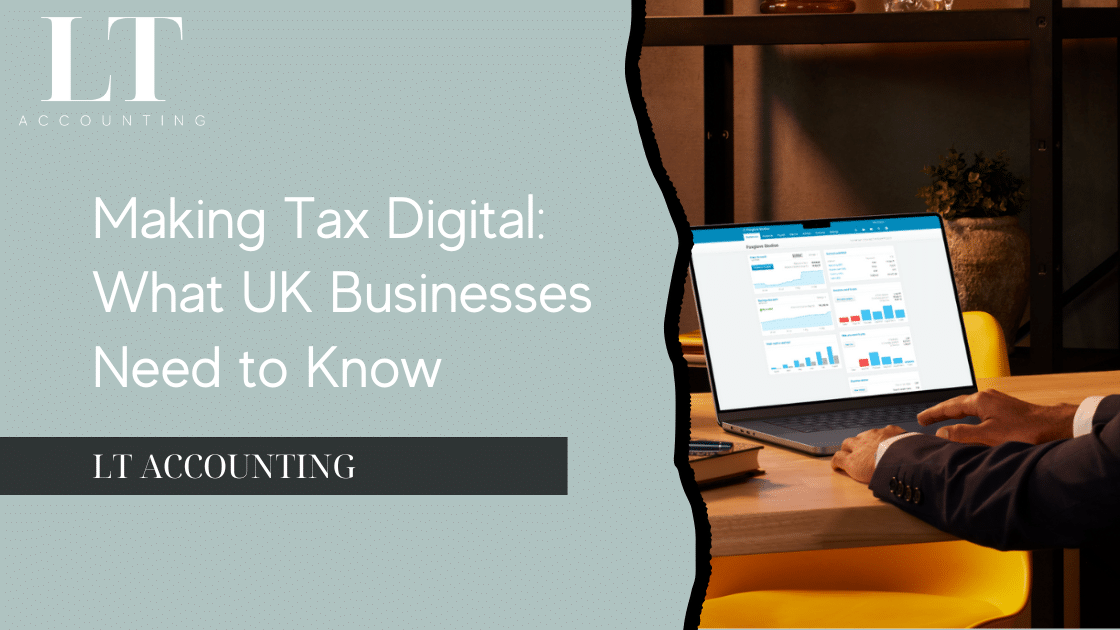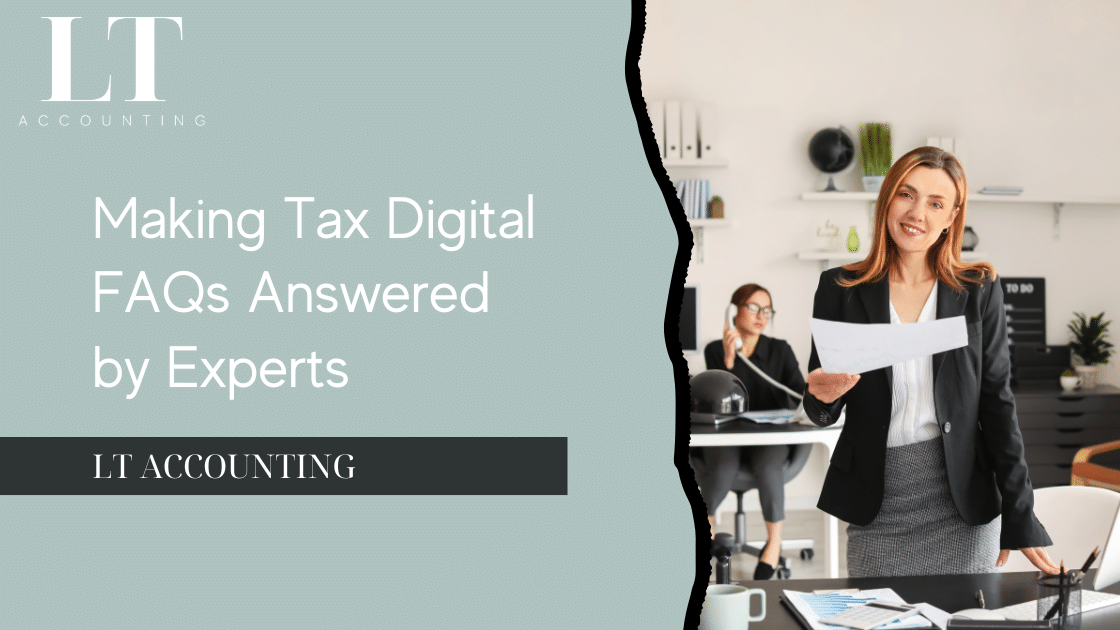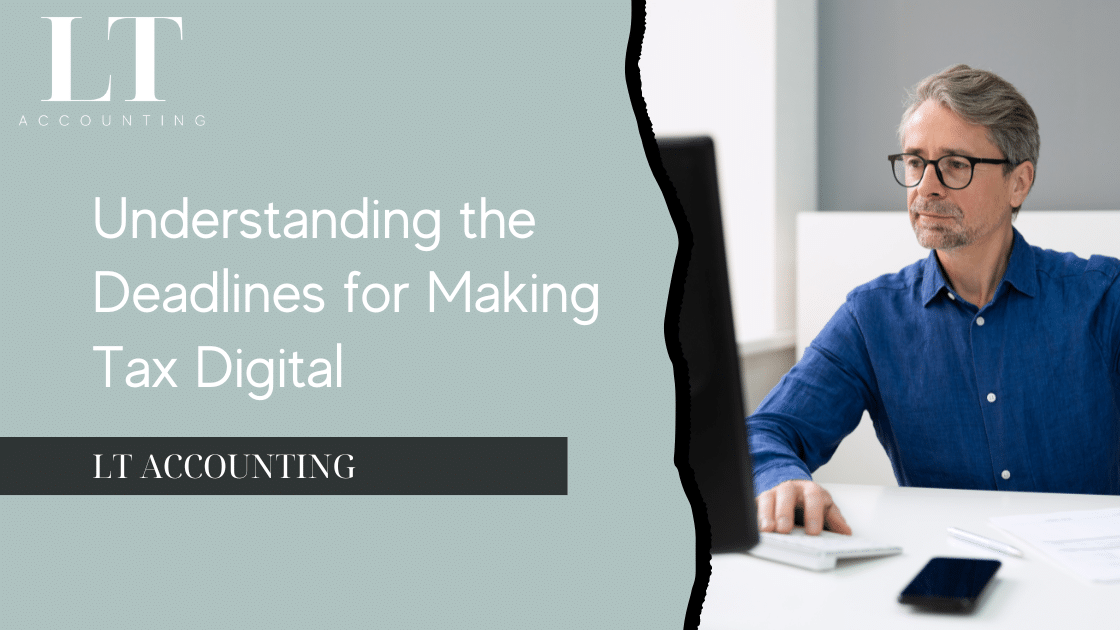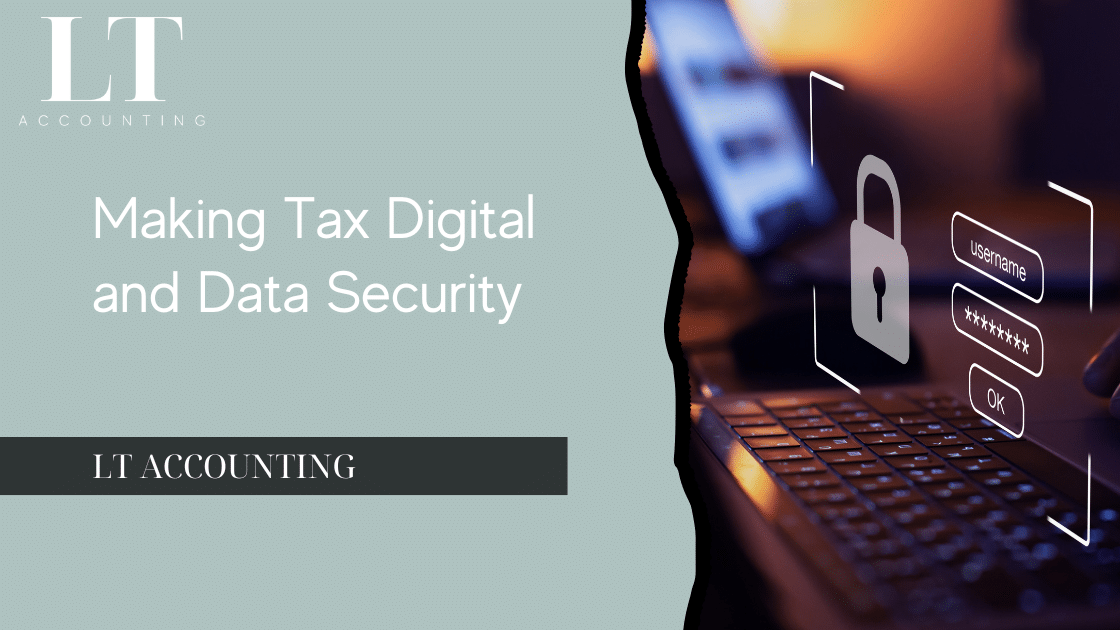Making Tax Digital (MTD) represents a transformative shift in tax administration in the United Kingdom, aimed at revolutionising the tax filing process for businesses and individuals alike. Initiated by His Majesty’s Revenue and Customs (HMRC), this initiative seeks to make the tax system more effective, efficient, and easier for taxpayers through the mandatory use of digital records and software. As we navigate through the nuances of MTD, understanding its implications, requirements, and deadlines becomes crucial for UK businesses to ensure compliance and harness the benefits of a digitised tax system.
The transition to digital tax management marks a significant move away from traditional paper-based methods, aiming to reduce errors, minimise tax evasion, and streamline the tax reporting process. For businesses, this means adapting to new software, changing long-standing practices, and potentially facing challenges along the way. However, it also offers opportunities for improved efficiency, real-time financial oversight, and a more straightforward tax filing procedure.
In this post, we’ll delve into the critical aspects of Making Tax Digital, outlining what UK businesses need to know about deadlines, software requirements, and preparation steps for the digital transition. This comprehensive guide aims to equip businesses with the knowledge and tools needed to navigate the MTD landscape confidently.
Understanding Making Tax Digital (MTD)
What is Making Tax Digital?
Making Tax Digital is an HMRC initiative designed to digitalise the UK tax system. The primary goal of MTD is to make it easier for individuals and businesses to get their tax right and keep on top of their affairs. By mandating the use of digital records and the submission of tax information through compatible software, HMRC aims to improve the accuracy of tax submissions and reduce the tax gap caused by avoidable errors.
Phased Approach of MTD
MTD is being implemented in phases, each targeting different segments of the taxpayer population:
- MTD for VAT: Launched in April 2019, it initially applied to VAT-registered businesses with a taxable turnover above the VAT threshold. From April 2022, it has been extended to all VAT-registered businesses, including those below the VAT threshold.
- MTD for Income Tax Self-Assessment (ITSA): Scheduled to start from April 2024, MTD for ITSA will affect self-employed businesses and landlords with annual business or property income above £10,000.
- MTD for Corporation Tax: Currently in the consultation phase, with a pilot expected to begin in the coming years, details regarding the full implementation date are yet to be confirmed.
Key Dates and Deadlines
- For VAT: All VAT-registered businesses are now required to follow MTD rules by keeping digital records and using software to submit their VAT returns.
- For ITSA: The start date for MTD for ITSA has been set for April 2024, giving businesses and their advisers more time to prepare.
- For Corporation Tax: The timeline is still under consultation, with a pilot phase to precede full implementation.
Requirements for Businesses
Who Needs to Comply?
- VAT: All VAT-registered businesses, regardless of turnover.
- ITSA: Self-employed individuals and landlords with annual business or property income over £10,000.
- Corporation Tax: Details to be confirmed, but it will eventually apply to all UK corporations.
Exemptions and Special Cases
There are exemptions for certain taxpayers, such as those who are digitally excluded due to religion, age, disability, or geographical location, among other reasons. However, these exemptions are not automatic and must be explicitly applied for through HMRC.
Making Tax Digital is a cornerstone of the UK government’s strategy to modernise the tax system, aiming to make tax administration more efficient and straightforward for all parties involved. As UK businesses adapt to these changes, understanding the requirements, deadlines, and how to prepare is essential for smooth compliance. By embracing digital transformation, businesses can not only meet their regulatory obligations but also gain insights into their financial performance, leading to more informed decision-making and strategic planning.
In the following sections, we will further explore software requirements, preparing your business for MTD, addressing challenges, and the future outlook of Making Tax Digital. Stay tuned for comprehensive insights into making the most of the digital tax era.
Software Requirements and Options
Navigating the digital transformation of tax submission requires understanding the software landscape for Making Tax Digital (MTD). For UK businesses, the shift to digital record-keeping and VAT filing under MTD mandates the use of HMRC-compatible software. This software plays a pivotal role in ensuring compliance, facilitating efficient tax management, and potentially streamlining accounting processes.
MTD-Compatible Software: What You Need
MTD-compatible software is a program or set of programs that can keep and maintain the records specified by HMRC, prepare VAT returns using this information, and communicate with HMRC via its API platform. This software must be able to:
- Keep and preserve digital records.
- Create a VAT return from the digital records.
- Submit this return electronically to HMRC.
- Receive information from HMRC concerning the business’s compliance record.
For businesses already using accounting software, the transition may be as simple as updating their existing systems to ensure they are MTD-compliant. Businesses not currently using software or those using non-compliant software will need to select an appropriate MTD-compatible solution.
Choosing the Right Software
When selecting software, businesses should consider:
- Functionality: Does the software meet the specific needs of your business? Look for features like record-keeping, tax return preparation, and submission capabilities.
- Cost: Software costs can vary widely. Consider both upfront costs and ongoing subscription fees.
- Usability: Consider the software’s ease of use and the learning curve for your team. Many providers offer trial periods, which can be an excellent opportunity to test usability.
- Support: Look for software that comes with reliable customer support. Access to timely help can be crucial, especially during the initial stages of transition.
- Integration: If you’re using other business systems or software, consider how well the new software will integrate with these existing systems.
Examples of HMRC-Recognised Software Providers
There are numerous HMRC-recognised software providers catering to a range of business needs and sizes. Some of the popular choices include:
- Xero: Known for its user-friendly interface and comprehensive features that cater to small and medium-sized businesses.
- QuickBooks: Offers a range of accounting features with an emphasis on automation and real-time data access.
- Sage: Provides a variety of software options, including solutions tailored for small businesses and more complex operations.
- FreeAgent: Designed for freelancers, small business owners, and their accountants, FreeAgent is user-friendly and includes features like expense tracking and invoicing.
Integrating MTD Software into Your Business
Integration involves more than just technical setup; it requires considering how digital records will be maintained, who in your organisation will manage the software, and how existing processes will adapt to incorporate digital tax filing. Training for staff, revising workflow processes, and potentially consulting with an IT specialist or an accountant can ensure a smooth transition.
The requirement for MTD-compatible software is a central component of Making Tax Digital, demanding careful consideration from UK businesses to ensure compliance. By selecting the right software, businesses can not only meet HMRC requirements but also gain efficiencies in financial management and reporting. As the digital transformation of tax continues to evolve, staying informed and proactive in software selection and integration will be key to navigating the future of tax administration successfully.
In the next sections, we will delve into preparing your business for MTD, addressing challenges, and looking towards the future of Making Tax Digital.
Preparing Your Business for MTD
As the Making Tax Digital (MTD) initiative unfolds, preparing your business for compliance is paramount. This preparation is not merely about meeting regulatory requirements; it’s about embracing an opportunity to streamline and enhance your financial processes. Here’s a step-by-step guide to ensure your business is ready for MTD, focusing on VAT, with insights applicable to future phases of MTD for Income Tax Self-Assessment (ITSA) and Corporation Tax.
Step 1: Assess Your Current Situation
Begin by evaluating your current accounting and record-keeping practices. Determine whether you are already using software that can be updated for MTD compliance or if you need to adopt new software. This assessment should also consider how your financial data is collected and recorded, identifying any gaps or inefficiencies that MTD-compliant software could resolve.
Step 2: Choose MTD-Compatible Software
Based on your assessment, select software that meets your business’s specific needs. Consider factors like cost, functionality, usability, and support, as discussed in the previous section. Engaging with an accountant or consultant who is familiar with MTD can provide valuable guidance in making this decision.
Step 3: Train Your Team
Implementing new software or processes requires buy-in from your team. Provide training sessions to ensure they are comfortable with the new systems and understand the importance of compliance. Highlight the benefits of MTD, such as more efficient tax filing and improved financial oversight, to foster a positive attitude towards the change.
Step 4: Update Your Processes
Integrating MTD software into your business may require changes to your existing financial processes. This could involve altering how and when financial transactions are recorded to ensure that digital records are kept up-to-date. Establish clear guidelines and procedures for your team to follow.
Step 5: Test Your System
Before the MTD mandate comes into effect for your business, conduct thorough testing of your new system. This includes ensuring that your software can accurately compile and submit VAT returns to HMRC. Testing helps identify any issues that can be addressed before they become problematic.
Step 6: Register for MTD with HMRC
Once you are confident in your system’s functionality, you must register for MTD with HMRC. This process involves signing up through the HMRC website and providing necessary business details. It’s important to note that once registered, you must submit all future VAT returns through MTD-compliant software.
Step 7: Maintain Digital Records
MTD requires certain records to be kept digitally, including details about sales and purchases, VAT owed and claimed, and the VAT account summary. Ensure your processes support the continuous and accurate digital recording of these transactions.
Step 8: Stay Informed and Adapt
The MTD initiative is evolving, with new information and guidelines released periodically by HMRC. Stay informed about any changes or updates to ensure ongoing compliance. Be prepared to adapt your processes and software as necessary, especially as MTD expands to include other taxes.
Challenges and Solutions
Implementing MTD can present challenges, especially for businesses transitioning from paper-based systems or those with complex financial structures. Common challenges include adapting to new software, training staff, and changing long-established processes. Solutions include seeking professional advice, utilizing software support services, and gradually integrating MTD processes into daily operations to minimise disruption.
Preparing for Making Tax Digital requires thoughtful planning, engagement with technology, and a commitment to enhancing your financial management practices. By following these steps, businesses can not only comply with MTD requirements but also leverage the benefits of digital record-keeping and tax filing. As the UK moves towards a fully digital tax system, being proactive and prepared will position your business for success in this new era of tax administration.
The Future of MTD and Long-Term Benefits
As UK businesses navigate the initial phases of Making Tax Digital (MTD), understanding the future direction of this initiative and its long-term benefits is crucial for strategic planning and maximising the value of compliance efforts. The MTD journey, which began with VAT, is set to expand and evolve, bringing comprehensive digital transformation to the UK tax system.
Expansion Plans for MTD
MTD for VAT was just the first step in a broader strategy to digitalise tax for businesses and individuals. Following its implementation:
- MTD for Income Tax Self-Assessment (ITSA): From April 2024, self-employed individuals and landlords with annual business or property income above £10,000 will need to comply with MTD for ITSA. This phase aims to simplify tax filing for millions, making it a more real-time process that can help taxpayers stay on top of their tax affairs.
- MTD for Corporation Tax: The timeline for MTD for Corporation Tax is still under development, with a pilot expected to start in the next few years. This will mark a significant shift for companies, requiring them to adopt digital record-keeping and tax filing practices on a scale similar to VAT and ITSA.
Long-Term Benefits of Digital Tax Management
The move towards a fully digital tax system is not without its challenges, but the potential benefits for businesses and the HMRC are significant:
- Improved Accuracy and Compliance: Digital record-keeping reduces the likelihood of errors and discrepancies in tax filings, leading to more accurate submissions and reducing the risk of penalties for non-compliance.
- Efficiency Gains: Automation of routine tasks, such as data entry and tax calculations, frees up time for businesses to focus on core activities. This efficiency can lead to cost savings and improved productivity.
- Real-Time Financial Oversight: Digital records provide businesses with up-to-date financial information, enabling better decision-making and financial planning. This real-time insight can help businesses manage cash flow more effectively and plan for tax liabilities.
- Easier Interaction with HMRC: Digital tax accounts and the ability to submit returns electronically make it easier for businesses to interact with HMRC, reducing administrative burdens and improving the overall tax filing experience.
- Environmental Benefits: Moving away from paper-based records and filings supports environmental sustainability efforts, aligning with broader goals to reduce paper use and waste.
Preparing for the Future
To leverage the long-term benefits of MTD, businesses should:
- Stay Informed: Keep up-to-date with the latest MTD developments and deadlines. HMRC and professional accounting bodies are excellent resources for information and guidance.
- Invest in Training: Continually educate your team about new software features and best practices in digital record-keeping. A well-informed team is crucial for maximising the benefits of MTD compliance.
- Embrace Digital Transformation: Beyond MTD, consider other areas of your business that can benefit from digitalisation. This could include inventory management, customer relationship management (CRM), and e-commerce.
- Seek Professional Advice: Accountants and tax advisors can provide valuable insights into how MTD aligns with your broader business strategy and financial planning. They can also offer advice on software selection and process optimisation.
Conclusion
Making Tax Digital is more than a compliance requirement; it’s a catalyst for broader digital transformation within UK businesses. By embracing MTD and the digital practices it entails, businesses can not only meet their tax obligations more efficiently but also gain deeper insights into their finances, make more informed decisions, and enhance their operational efficiency. As we look to the future, the continued expansion of MTD presents an opportunity for businesses to further integrate digital technologies into their processes, driving growth and innovation in the digital age.
With the completion of the article sections detailing “Making Tax Digital: What UK Businesses Need to Know,” we’ve covered a comprehensive overview of the HMRC’s initiative aimed at modernising the UK tax system. From understanding the basics of MTD, requirements for businesses, software selection, to preparing for the digital transition and addressing implementation challenges, this guide has aimed to equip UK businesses with essential knowledge and strategies for navigating MTD. Lastly, we explored the future landscape of MTD and its long-term benefits, emphasising the importance of digital tax management and its role in business growth and efficiency.
Key Takeaways
- MTD Compliance is Mandatory: All VAT-registered businesses are now required to keep digital records and use MTD-compatible software for VAT returns. The scope will expand to include Income Tax Self-Assessment (ITSA) for self-employed individuals and landlords with business or property income over £10,000 annually from April 2024, with Corporation Tax to follow.
- Choosing the Right Software is Crucial: The selection of MTD-compatible software should be based on business size, needs, and existing processes. It’s essential to consider features, cost, usability, and support in this decision-making process.
- Preparation is Key to Smooth Transition: Businesses must assess their current processes, train their teams, and potentially revise their accounting practices to ensure a seamless transition to digital tax management.
- Challenges Can Be Overcome with Proper Planning: While the shift to MTD may present challenges, such as adapting to new software and changing long-established processes, these can be effectively managed through education, support, and leveraging professional advice.
- Long-Term Benefits Extend Beyond Compliance: Adopting digital tax management practices offers benefits including improved accuracy, efficiency, real-time financial oversight, and strategic decision-making capabilities.
Final Thoughts
As the UK continues to advance its digital agenda, Making Tax Digital is a critical step towards a more efficient, transparent, and streamlined tax system. For businesses, the journey towards MTD compliance is not just about meeting regulatory requirements; it’s an opportunity to transform accounting practices, embrace digital innovation, and enhance overall business performance. By staying informed, planning ahead, and adopting a proactive approach to digital tax management, UK businesses can navigate the MTD landscape successfully, leveraging the initiative’s benefits for long-term growth and success.
This comprehensive guide aims to serve as a valuable resource for UK businesses at various stages of their MTD journey, from those just starting to prepare for the transition to those looking to optimise their digital tax management practices for future challenges and opportunities.





